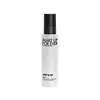What's inside
What's inside
 Key Ingredients
Key Ingredients

 Benefits
Benefits

 Concerns
Concerns

 Ingredients Side-by-side
Ingredients Side-by-side

Water
Skin ConditioningAlcohol
AntimicrobialVinyl Dimethicone/Methicone Silsesquioxane Crosspolymer
Butylene Glycol
HumectantPhenoxyethanol
PreservativeHydroxyacetophenone
AntioxidantPEG-11 Methyl Ether Dimethicone
EmulsifyingBis-Ethoxydiglycol Cyclohexane 1,4-Dicarboxylate
EmollientRosa Damascena Flower Water
MaskingParfum
MaskingDisodium EDTA
Hectorite
AbsorbentLinalool
PerfumingHexyl Cinnamal
PerfumingSodium Hyaluronate
HumectantPanthenol
Skin ConditioningCitric Acid
BufferingCaprylhydroxamic Acid
1,2-Hexanediol
Skin ConditioningWater, Alcohol, Vinyl Dimethicone/Methicone Silsesquioxane Crosspolymer, Butylene Glycol, Phenoxyethanol, Hydroxyacetophenone, PEG-11 Methyl Ether Dimethicone, Bis-Ethoxydiglycol Cyclohexane 1,4-Dicarboxylate, Rosa Damascena Flower Water, Parfum, Disodium EDTA, Hectorite, Linalool, Hexyl Cinnamal, Sodium Hyaluronate, Panthenol, Citric Acid, Caprylhydroxamic Acid, 1,2-Hexanediol
Water
Skin ConditioningMethylpropanediol
SolventGlycerin
HumectantPentylene Glycol
Skin ConditioningPvp
Emulsion StabilisingChlorphenesin
AntimicrobialPPG-26-Buteth-26
Skin ConditioningHydroxyacetophenone
AntioxidantPEG-40 Hydrogenated Castor Oil
EmulsifyingAloe Barbadensis Leaf Juice
Skin ConditioningVaccinium Vitis-Idaea Fruit Extract
AntioxidantSodium Citrate
BufferingParfum
MaskingTromethamine
BufferingCitric Acid
BufferingXanthan Gum
EmulsifyingGluconolactone
Skin ConditioningHyaluronic Acid
HumectantSodium Benzoate
MaskingPentaerythrityl Tetra-Di-T-Butyl Hydroxyhydrocinnamate
AntioxidantCalcium Gluconate
HumectantTocopherol
AntioxidantWater, Methylpropanediol, Glycerin, Pentylene Glycol, Pvp, Chlorphenesin, PPG-26-Buteth-26, Hydroxyacetophenone, PEG-40 Hydrogenated Castor Oil, Aloe Barbadensis Leaf Juice, Vaccinium Vitis-Idaea Fruit Extract, Sodium Citrate, Parfum, Tromethamine, Citric Acid, Xanthan Gum, Gluconolactone, Hyaluronic Acid, Sodium Benzoate, Pentaerythrityl Tetra-Di-T-Butyl Hydroxyhydrocinnamate, Calcium Gluconate, Tocopherol
 Reviews
Reviews

Ingredients Explained
These ingredients are found in both products.
Ingredients higher up in an ingredient list are typically present in a larger amount.
Citric Acid is an alpha hydroxy acid (AHA) naturally found in citrus fruits like oranges, lemons, and limes.
Like other AHAs, citric acid can exfoliate skin by breaking down the bonds that hold dead skin cells together. This helps reveal smoother and brighter skin underneath.
However, this exfoliating effect only happens at high concentrations (20%) which can be hard to find in cosmetic products.
Due to this, citric acid is usually included in small amounts as a pH adjuster. This helps keep products slightly more acidic and compatible with skin's natural pH.
In skincare formulas, citric acid can:
While it can provide some skin benefits, research shows lactic acid and glycolic acid are generally more effective and less irritating exfoliants.
Most citric acid used in skincare today is made by fermenting sugars (usually from molasses). This synthetic version is identical to the natural citrus form but easier to stabilize and use in formulations.
Read more about some other popular AHA's here:
Learn more about Citric AcidHydroxyacetophenone is antioxidant with skin conditioning and soothing properties. It also boosts the efficiency of preservatives.
This ingredient is not irritating or sensitizing.
Parfum is a catch-all term for an ingredient or more that is used to give a scent to products.
Also called "fragrance", this ingredient can be a blend of hundreds of chemicals or plant oils. This means every product with "fragrance" or "parfum" in the ingredients list is a different mixture.
For instance, Habanolide is a proprietary trade name for a specific aroma chemical. When used as a fragrance ingredient in cosmetics, most aroma chemicals fall under the broad labeling category of “FRAGRANCE” or “PARFUM” according to EU and US regulations.
The term 'parfum' or 'fragrance' is not regulated in many countries. In many cases, it is up to the brand to define this term.
For instance, many brands choose to label themselves as "fragrance-free" because they are not using synthetic fragrances. However, their products may still contain ingredients such as essential oils that are considered a fragrance by INCI standards.
One example is Calendula flower extract. Calendula is an essential oil that still imparts a scent or 'fragrance'.
Depending on the blend, the ingredients in the mixture can cause allergies and sensitivities on the skin. Some ingredients that are known EU allergens include linalool and citronellol.
Parfum can also be used to mask or cover an unpleasant scent.
The bottom line is: not all fragrances/parfum/ingredients are created equally. If you are worried about fragrances, we recommend taking a closer look at an ingredient. And of course, we always recommend speaking with a professional.
Learn more about ParfumWater. It's the most common cosmetic ingredient of all. You'll usually see it at the top of ingredient lists, meaning that it makes up the largest part of the product.
So why is it so popular? Water most often acts as a solvent - this means that it helps dissolve other ingredients into the formulation.
You'll also recognize water as that liquid we all need to stay alive. If you see this, drink a glass of water. Stay hydrated!
Learn more about Water